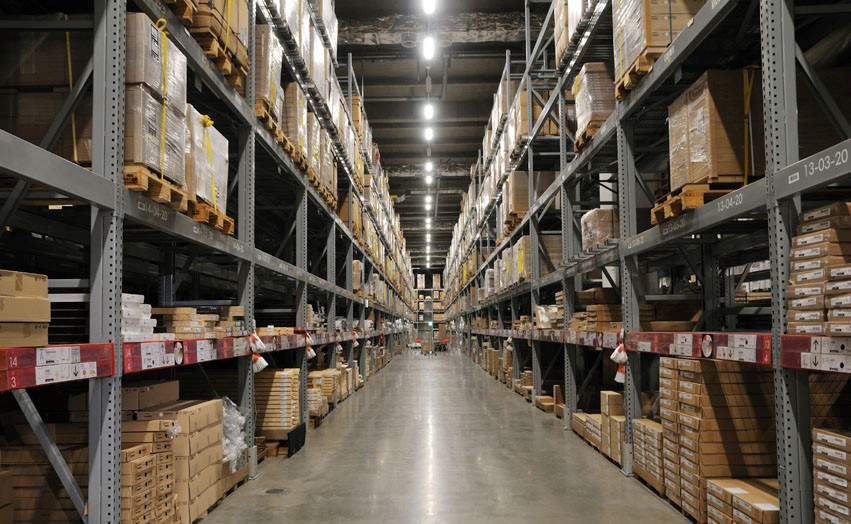
04 Nov What are the Warehousing Facilities and Implementation Steps at Amazon?
When there is an interruption in the supply chain, Amazon opens its Warehousing & Distribution (AWD) service, giving merchants access to inexpensive long-term storage. The e-commerce behemoth launched this initiative after polling its vendors, who identified storage prices, complex pricing structures, and a lack of capacity as their top concerns. With AWD, merchants no longer need to transport their goods from upstream factories to Amazon delivery locations because it is pay-as-you-go.
The ecosystem of the warehouse
In Amazon, warehouse management is not homogeneous and has instead developed a well-considered warehouse ecosystem to provide the Amazon system with structure. This ecosystem can be best seen as a distribution network. Five different types of facilities make up Amazon’s distribution network, according to their system:
- Cross dock center: Parcels from international suppliers are stored here until additional inventory is needed by the fulfillment facilities.
- Fulfillment Center: A warehouse expert would work at a fulfillment center, which is where Amazon keeps its goods and where staff members gather and package orders for clients. More than 175 fulfillment centers are run by the business globally.
- Sorting centers: Introduced in 2014, sorting centers aim to enhance last-mile delivery. “No merchandise is maintained on these sites. Instead, customer-ready items are moved around conveyor belts while being sorted and routed by robots and Amazon employees according to zip code before being delivered to a carrier.
- Amazon Prime Now Centers: Prime Now Centers are the foundation of Amazon’s system for urgent products like food. The two types of facilities that are most crucial to Amazon’s inventory management are fulfillment centers and sorting centers. These facilities handle products that are typically delivered within two hours of purchase.
- Delivery System: USPS, FedEx, or UPS handle the last mile of many Amazon goods, and the delivery stations provide Amazon flexibility in high-traffic areas.

Effective Inventory Management in Warehouses
Set up the warehouse properly
In keeping with the prior premise, some stocks will be utilized more frequently than others. With these things in mind, design your warehouse area. Don’t position the things that are utilized the most frequently in a difficult-to-reach area of the warehouse. You may cut down on the time it takes to load and transport such produce by giving fast-moving items priority.
Be flexible
Business requirements evolve. What may have benefited your warehouse and company, in the beginning, might not in the future. Every year, do an audit of how your warehouse is handled, updating the inventory that is on hand and any possible missing items. Determine whether adjustments are required to improve its performance. When it’s feasible, speak with senior staff to see if they can recommend areas for improvement.
Utilize labeling
Every stock item in the warehouse should have a label. Clear Amazon labels, sometimes referred to as SKU (stock-keeping unit) numbers, will make sure that things are simple to recognize before being moved or sent. According to your company’s demands and size, you might alternatively employ a barcode system. Whatever you choose, be sure it is current and that no digits are being used improperly.
Make a plan for your warehouse
Rent, electricity, and other utilities cost you money for every square inch of your warehouse. Every inch that your employees walk unnecessarily costs you income in the form of labor time. Effective space planning allows you to design the staff and inventory paths that will save you the most money and time.
Additionally, it implies that you won’t quickly run out of room. By providing enough room for trucks or other weight-carrying equipment to maneuver, this approach also helps to alleviate safety concerns.
Train employees well
Employees that are familiar with the warehouse inventory management system will adhere to it better and manage the facility more effectively. You can make sure that your team has an organized warehouse inventory by having competent workers. If not, standards may deteriorate.
Prepare in advance for various needs
Every business has unique seasonal needs. Plan yours properly and in advance. You want your inventory levels to reflect the fact that certain seasons of the year will be busier than others. Using previous trends, predict the demand and make sure your supply is kept at the right amount for that time frame.
Conclusion
More than simply customer expectations have shifted as a result of the Amazon Effect. Businesses have been compelled to speed up Amazon supply chain operations as the e-commerce behemoth transforms retail and the global economy to keep up with technological advancements like two-day and same-day shipping. There are important lessons to be learned from Amazon’s relentless quest to develop inventory control, warehouse automation, and the supply chain of the future for firms affected by the Amazon Effect but not competing directly with Amazon.

No Comments